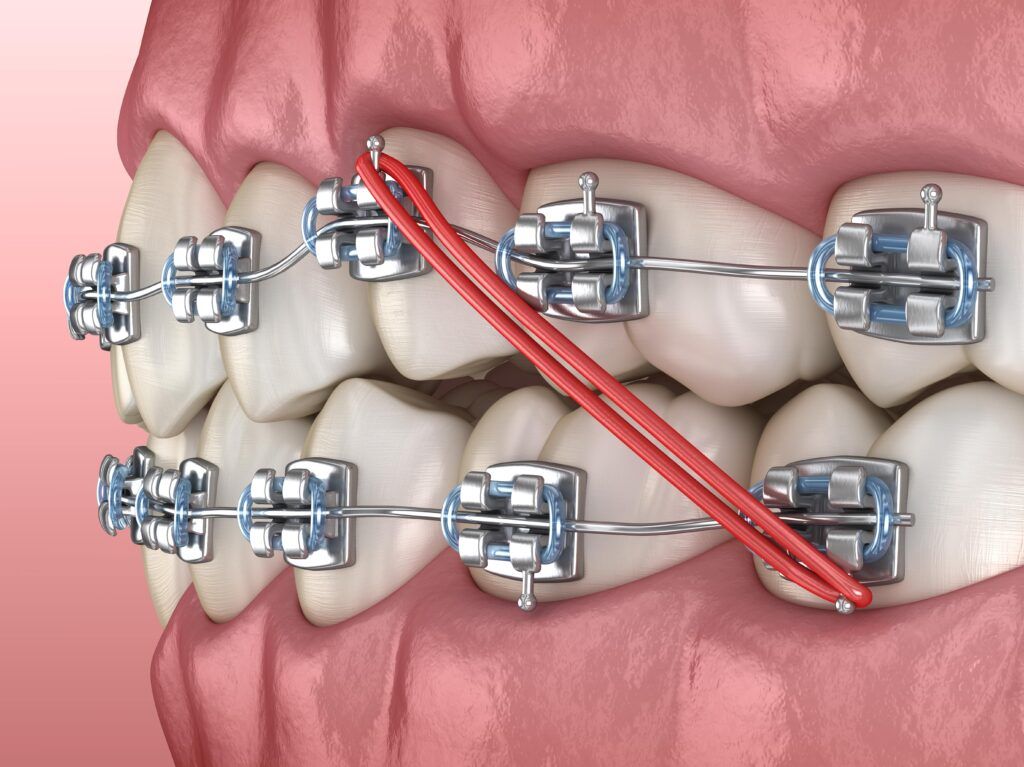How Cumming Orthodontics Addresses Common Braces and Invisalign Concerns
How Cumming Orthodontics Addresses Common Braces and Invisalign Concerns
Blog Article
Comprehensive Overview to Orthodontics Procedures for Remedying Dental Misalignments
In the world of orthodontics, the journey to accomplishing a perfectly lined up smile entails a myriad of procedures customized to correct dental imbalances. From traditional braces to undetectable aligners and also surgical choices, the area of orthodontics offers a series of remedies to deal with differing levels of oral irregularities. Understanding the ins and outs of each treatment, including their mechanisms, benefits, and prospective downsides, is essential in making notified choices regarding one's orthodontic therapy. As we browse via the detailed overview to orthodontic procedures for remedying oral misalignments, the complex details of each technique will unfold, clarifying the path towards a functional and harmonious oral alignment.
Orthodontic Procedures Introduction

Regular modifications and surveillance are essential components of orthodontic therapy to ensure development is on track and to make any required alterations along the means. By undergoing orthodontic procedures, people can not only accomplish a straighter grin but likewise improve their general dental wellness and function.
Typical Braces: Exactly How They Function
When considering orthodontic therapies for oral imbalances, standard dental braces stick out as a tried and true method for correcting teeth placing. Standard dental braces contain braces, cords, and bands that collaborate to apply continuous stress on the teeth, progressively moving them into the desired placement. The brackets are connected to the teeth utilizing a special adhesive, and the cables are threaded with the brackets. By adjusting the tension of the cords, orthodontists can regulate the instructions and force put on each tooth, leading them right into appropriate alignment over time.
As stress is applied to the teeth with the dental braces, the bone surrounding the teeth is reshaped to support the brand-new tooth settings. Patients will require routine adjustments at the orthodontist's office to make sure the braces continue to apply the proper pressure for effective teeth motion.
Unseen Aligners: Cons and pros
Undetectable aligners provide a convenient and very discreet choice to conventional braces for fixing oral misalignments. These clear, custom-made trays are virtually invisible when worn, making them an enticing choice for individuals looking for an extra aesthetically pleasing orthodontic therapy. One of the key benefits of unnoticeable aligners is their removability, permitting much easier upkeep of dental health compared to traditional dental braces. Individuals can eliminate the aligners prior to eating or cleaning their teeth, minimizing the danger of food obtaining stuck in the device and streamlining the cleansing procedure.

Surgical Orthodontic Options
Surgical treatments in orthodontics existing viable options for attending to intricate find out this here oral imbalances that might not be efficiently solved with traditional orthodontic therapies. While conventional braces and undetectable aligners can correct numerous orthodontic concerns, certain situations call for medical treatment to attain ideal outcomes. Surgical orthodontic choices are commonly advised for extreme malocclusions, substantial jaw disparities, and situations where the underlying bone framework needs modification to achieve correct placement.
One common surgical orthodontic procedure is orthognathic surgical treatment, which entails rearranging the jaws to fix functional issues such as trouble speaking or eating. This surgical treatment is commonly carried out in collaboration with an orthodontist that aids line up the teeth before and after the treatment. Surgical orthodontics might also involve treatments to subject impacted teeth, get rid of excess gum tissue, or improve the jawbone to produce a more unified face profile.
Before considering medical orthodontic alternatives, patients undertake a thorough examination to identify the necessity and prospective benefits of such treatments. orthodontist. While surgical procedure may appear complicated, it can substantially improve both the feature and looks of the smile in situations where conventional orthodontic therapies drop short
Retainers and Post-Treatment Care

Post-treatment care entails complying with the orthodontist's directions vigilantly. This might consist of correct oral health practices, participating in follow-up consultations, and using the retainers as recommended. Failing to conform with post-treatment treatment instructions can result in regression, where the teeth gradually relocate back towards their initial positions. Regular retainer wear, good oral hygiene, and normal dental exams are important for maintaining the results accomplished via orthodontic surgery and making sure the lasting security of the corrected dental positioning.
Final Thought
To conclude, orthodontic Click This Link procedures provide various options for correcting oral imbalances. Standard dental braces utilize metal braces and cords to change teeth right into appropriate alignment. Invisible aligners provide an even more very discreet option but may not be ideal for all instances. Surgical orthodontic choices are offered for much more severe misalignments. Retainers are commonly made use of post-treatment to preserve the new alignment. Overall, orthodontic treatments can effectively boost oral health and wellness and aesthetic appearance.
As we navigate via the detailed overview to orthodontic procedures for correcting dental imbalances, the complex details of each approach will certainly unfold, shedding light on the course toward a practical and harmonious oral placement. - invisalign
One of the most common orthodontic therapies is the usage of dental braces, which consist of metal braces and cables that apply mild pressure to progressively move teeth into the desired read here setting.When considering orthodontic treatments for oral imbalances, conventional braces stand out as a time-tested approach for fixing teeth positioning. In addition, unseen aligners may not be ideal for complex orthodontic concerns that need more considerable teeth motion, as they are generally advised for mild to modest cases. Retainers are personalized orthodontic devices developed to hold teeth in their remedied settings after the conclusion of orthodontic treatment.
Report this page